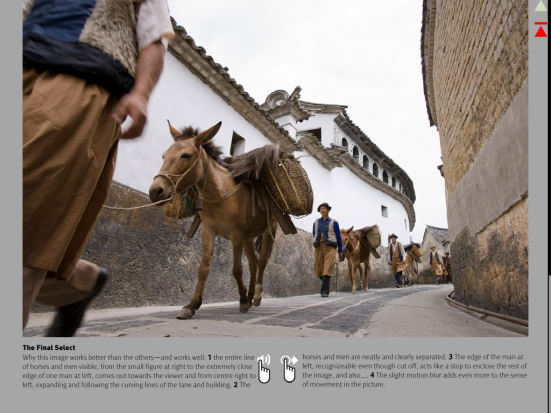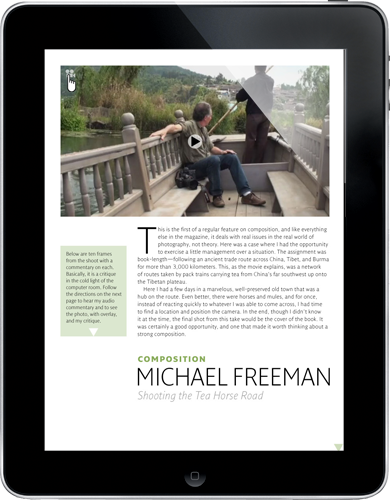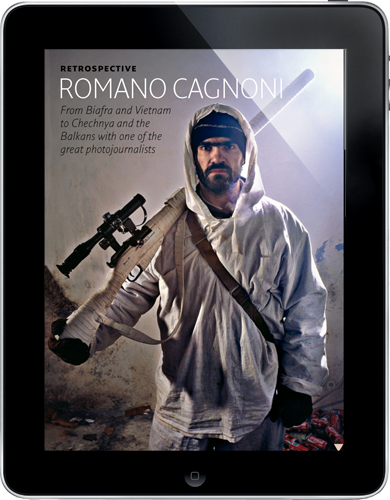
The Olympus TG820: waterproof, shockproof, crushproof, freezeproof, and it takes photos.
It's an inescapable, plaintive cry: the compact camera is in decline! You can scarcely go a week without hearing someone lament that sales of compact cameras are falling; that the ubiquity of camera phones is eclipsing the point-and-shoot; that on Flickr there are more photos taken with iPhones than anything else. And all of these statements are true. Compact camera sales fell by roughly 30% in 2011 compared to 2010 figures (and they were down in 2010 on 2009 sales). Annie Liebovitz pulled out an iPhone on Rock Center and recommended it as a snapshot camera. And the iPhone 4 topped the list of popular cameras in Flickr's January 2012 stats. But none of this means that the compact camera is dead. Not quite yet, anyway.
Over the past two weeks Canon, Nikon, Olympus, Pentax, and Sony have all released new compact cameras. We're not talking about piddling little things that they're rolling out because they've some peculiar obligation to the format; some of these are highly specced shooters with a distinct market in mind: considered pieces of kit that are being produced because they fulfil a demand from photographers. I'll grant you that a few of the gimmicks on some of the cameras do reek of desperate attempts to convince a generation of iPhoneographers that they need a compact, but that is to be expected. They're in the business of making money and they're going to try their hardest to poach back the market from Apple, Nokia, Samsung, et al. But whilst the camera phone definitely fulfils the photographic expectations of a swathe of people who need nothing more than a handy-dandy picture-snapper in their pocket, it doesn't provide for everyone who wants an easily-accessible camera.
Without exception, all of those manufacturers with new releases in the past two weeks have included a camera in the lineup that is waterproof and shockproof. In Nikon's case it was only waterproof to three metres and didn't enjoy the most flamboyant functionality ever, whilst Olympus' TG820 can cope with being crushed by upto 100kg as well as temperatures down to -10 degrees Celsius, water to depths of 10 metres, and being dropped from two metres; but they highlight a particular target market.
For people who love to snowboard, snorkel, and rockclimb, and take photos whilst they're at it, they want a camera that can withstand at least some of the perils that might befall it but still deliver photos that do justice to their fantastic pursuits. They want a decent optical zoom and a reasonably sized sensor, they might even want full manual control, and they want it to be small, easy-to-use, and all in one place. Changing lenses on a Nikon V1 whilst clinging to a mountain face isn't ideal, no matter how small it is, and the digital zoom on an iPhone 4S is never going to be as sharp as the 5× optical zoom on the Olympus TG820. It's the compact rugged camera that offers them what they need - photographically and practically - so that they can take photos they can hang on their walls with a camera they can also dip into water, throw onto snow, drag through a sandstorm, or drop onto rocks.
For my money, Sony is on to something with its TX200V. When you read the spec, you get the impression that it's a relatively competent compact; it has a touch-screen, 18 megapixel sensor, 5× optical zoom, HD video, and a gamut of other toys. That it's waterproof to five metres, freezeproof to -10 degrees Celsius, and dustproof are almost after-thoughts in its design. But it's a clear indication of a purpose that the compact camera fulfils: they should be able to go anywhere and take a half-way decent picture in the process.
I started taking photos when I was young, around five years old, using my Ma's Olympus Trip. When I was seven, my parents bought me my own camera; it was an Agfamatic that took 110 film cartridges, had a push-pull wind-on mechanism, and a telephoto lens that slid across the normal lens for closer-up goodness. Until it was replaced about three years later with a far more sophisticated Pentax compact, it was my pride and joy. Having my own camera from such a young age taught me something valuable about photography - and it wasn't just about the principles of light and focus and perspective. It was that photography is a craft; a camera is a specialist tool and it demands specialist skills to get the most out of it.
Compact cameras fulfil this incredibly important need: they provide young photographers with the opportunity to learn and develop with dedicated equipment, but equipment that simultaneously doesn't have to cost a prince's ransom and won't overwhelm them. I might let my niece play around with my SLR whilst I'm standing there, but I wouldn't dream of letting her walk off with it alone, if for no other reason than it's damn heavy for her. Would I prefer that she learned about proper focusing and the rudiments of manual control on a real camera: of course I would! As for being able to wander off by herself and explore her photographic creativity: hell yes! Everyone has to start somewhere, and compact cameras are ideal nurseries for novice photographers; they're definitely not to be sneered at.
Aside from the practical, there's a philosophical element to learning photography with a proper camera: it allows new photographers to gain an appreciation for photography as an art-form, not as something that's a bolt-on to a ubiquitous piece of gadgetry. I want photography to be universally appreciated and accessible, and camera phones allow for that; they're also a fantastic first step into the photographic waters for some people. But in between iPhones and inerchangeable lenses, we need something else, and that something else is the compact.
I use my iPhone to take photos; I also use my compact camera; and I use my dSLR. Sometimes I even drag out a film camera. My iPhone hasn't replaced my compact camera as a picture-taking device; rather, it has augmented my photographic arsenal. It's one more way that I'm able to paint with light. When you think about that in terms of volume of photos taken, it's easy to see that with so many devices out there taking so many photos, camera phones will be topping the league tables of most-used photo-taking device, given that almost everyone has one. Furthermore, when you remember that the total number of photos being taken is now divided amongst four major categories of camera - phone, compact, EVIL, and SLR - the proportions are going to have changed from the days when just compacts and SLRs were the cameras of choice.
Right now, my compact camera does things that my iPhone is only dreaming of, and coupled with its size, that's why I have it. And just as the technology that's in a camera phone will continue to develop, so will other cameras. Consequently, I can't see the day just yet that I'll be relinquishing the compact that I keep in my bag. Of course, that sort of logic won't apply to everyone, and more people will reach a point when they can abandon their compacts for their camera phones, but having all of these choices is no bad thing.
There's also this idle thought that occasionally comes to entertain me when I think about the development of camera phones. Would it be possible that their evolution will eventually come full-circle? As they become increasingly powerful and versatile, will their primary function cease to be that of a phone, and will they essentially morph into a compact camera again? That's probably a long way off, but I wouldn't place it beyond the realms of possibility.
Yes, the compact camera market is declining; no, I don't think it's terminal. The compact camera is another choice for people who want to take photos, and in some respects, it's a choice that satisfies some important gaps in the market. For some people, it's precisely the camera that they need. So they might be down; but they're definitely not out.








